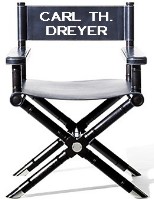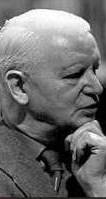 |
 |
Peering under the surface of Carl Theodor Dreyer's controlled and strictly organized cinema exposes consistencies of a deeply-rooted psychological nature. These fuse into his film's heterogeneous styles whether he was experimenting in the genres of drama, comedy or horror. His character's conflicts were often based in personal moral spheres - occasionally religious crises - overlapping onto society's more conventional and ethically-centered interpretations. Austere expressions of human suffering figured prominently in his sporadic oeuvre. His narratives frequently evolved stalwart, virtuous and martyr-like female figures who were intensely oppressed and/or devoutly prepared to surrender themselves for a perceived moral betterment. Dreyer's meticulous attention to detail imbued his film language with a profound transcendental quality, marking him as not only the greatest director ever to emerge from Denmark but as a prominent, and universally recognized, master of cinema. |
|
|
||
|
Suggested Reading (click cover or title for more info)
Speaking the Language of Desire: The Films of Carl
Dreyer |
Director - Feature filmography and DVDBeaver links: Gertrud (1964), Ordet (1955), Storstrømsbroen (1950), Thorvaldsen (1949), They Caught the Ferry (1948), The Danish Village Church (1947), The Struggle Against Cancer (1947), Water from the Land (1946), Two People (1945), Day of Wrath (1943), Good Mothers (1942), Vampyr - Der Traum des Allan Grey (1932), La Passion de Jeanne d'Arc (1928), The Bride of Glomdal (1926), Master of the House (1925), Mikaël (1924), Der var engang (1922), Die Gezeichneten (1922), Leaves Out of the Book of Satan (1921), The Parson's Widow (1920), Præsidenten (1919) |
|
